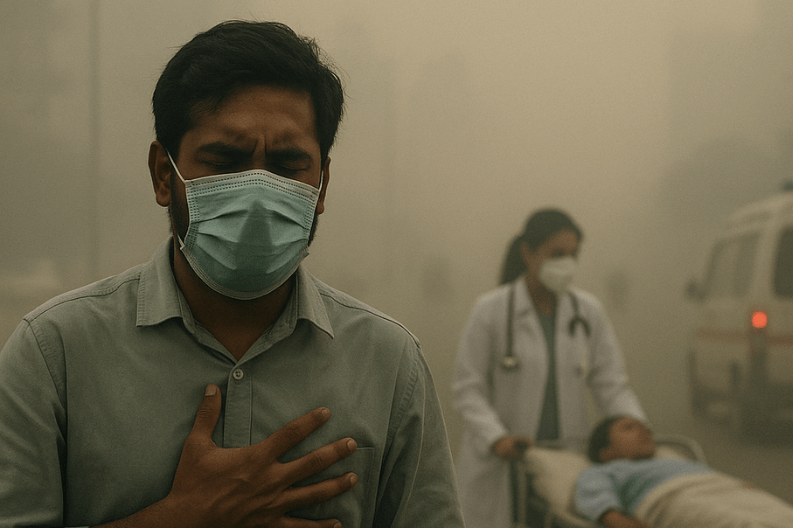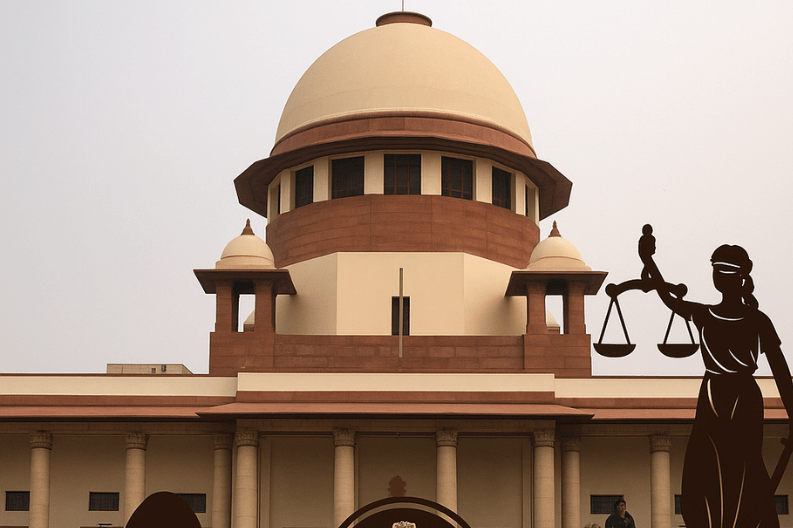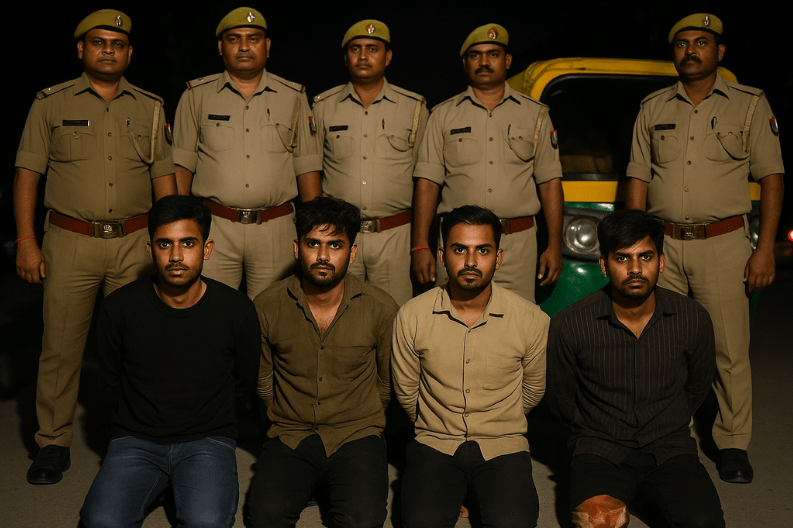Delhi-NCR faces air pollution crisis as toxic air continues to suffocate millions of people and strain hospitals. Each winter, the region’s air quality plunges to dangerous levels, turning the season into a public health emergency. Over the past few weeks, hospitals across Delhi, Noida, Gurugram, Faridabad, and Ghaziabad have seen a sharp rise in patients struggling with breathlessness, chest pain, and dry cough.
Doctors across major hospitals confirm a worrying surge in pollution-related illnesses. More people are complaining of breathlessness, tight chests, and throat irritation. Even healthy adults are reporting new symptoms, showing how deeply poor air quality affects everyone. Patients recovering from simple respiratory infections are taking longer to heal, which signals how pollution is weakening the body’s natural recovery process.
Dr. Aamir Nadeem, a lung specialist at Regency Hospital in Gorakhpur, notes a major increase in patients suffering from breathing problems. He explains, “Many young professionals are developing urban bronchitis, a pollution-linked inflammation, and recovery after infections now takes longer as poor air quality weakens lung resilience.” His warning highlights how even the younger, healthier population is falling victim to Delhi’s polluted air.
The main danger lies in PM2.5, extremely fine particles that enter deep into the lungs. These pollutants trigger asthma attacks, lung infections, and even heart problems. Studies show that Delhi’s PM2.5 levels often exceed the World Health Organization (WHO) limit by more than ten times during winter. Long-term exposure, doctors say, increases the risk of chronic lung disease and premature death.
Children and older adults are the worst affected. Experts warn that when the Air Quality Index (AQI) crosses 400, the “severe” category, cases of pneumonia and breathing disorders rise sharply. Hospitals are now seeing more children under five and senior citizens with critical respiratory symptoms.
Moreover, pollution is weakening the immune system. As a result, even mild infections like the flu or cold take longer to recover from. Asthma patients are facing more frequent attacks, while regular exercisers are finding it difficult to breathe during outdoor workouts. Clearly, no one is safe from the city’s polluted air.
Experts link Delhi-NCR’s worsening pollution to multiple causes, including stubble burning, vehicular emissions, industrial smoke, and construction dust. During winter, slow wind speed traps these pollutants, forming a dense smog layer that covers the city for days.
To stay safe, health authorities are urging residents to be cautious. They advise limiting outdoor activities, especially early mornings and late evenings when pollution peaks. Using N95 masks, keeping windows closed, and using air purifiers can reduce exposure. Doctors also suggest drinking plenty of water and eating antioxidant-rich foods such as fruits, nuts, and leafy greens to support lung function.
Environmental organizations are calling for stronger and faster government action. They are demanding strict rules on construction dust, cleaner fuels, and better public transport systems. Meanwhile, citizens are encouraged to carpool, avoid burning waste, and plant more trees to improve local air quality.
The government has already activated the Graded Response Action Plan (GRAP), which includes restrictions on construction, bans on firecrackers, and the use of water sprinklers to control dust. However, experts believe these short-term actions are not enough. They emphasize that India needs stronger long-term strategies and consistent enforcement to bring real change.
In conclusion, Delhi-NCR faces air pollution crisis that threatens the health and well-being of millions every winter. As hospitals fill with patients, both citizens and authorities must act urgently. Through public awareness, responsible behavior, and strict government policies, Delhi can hope to breathe cleaner air and move toward a healthier future.



